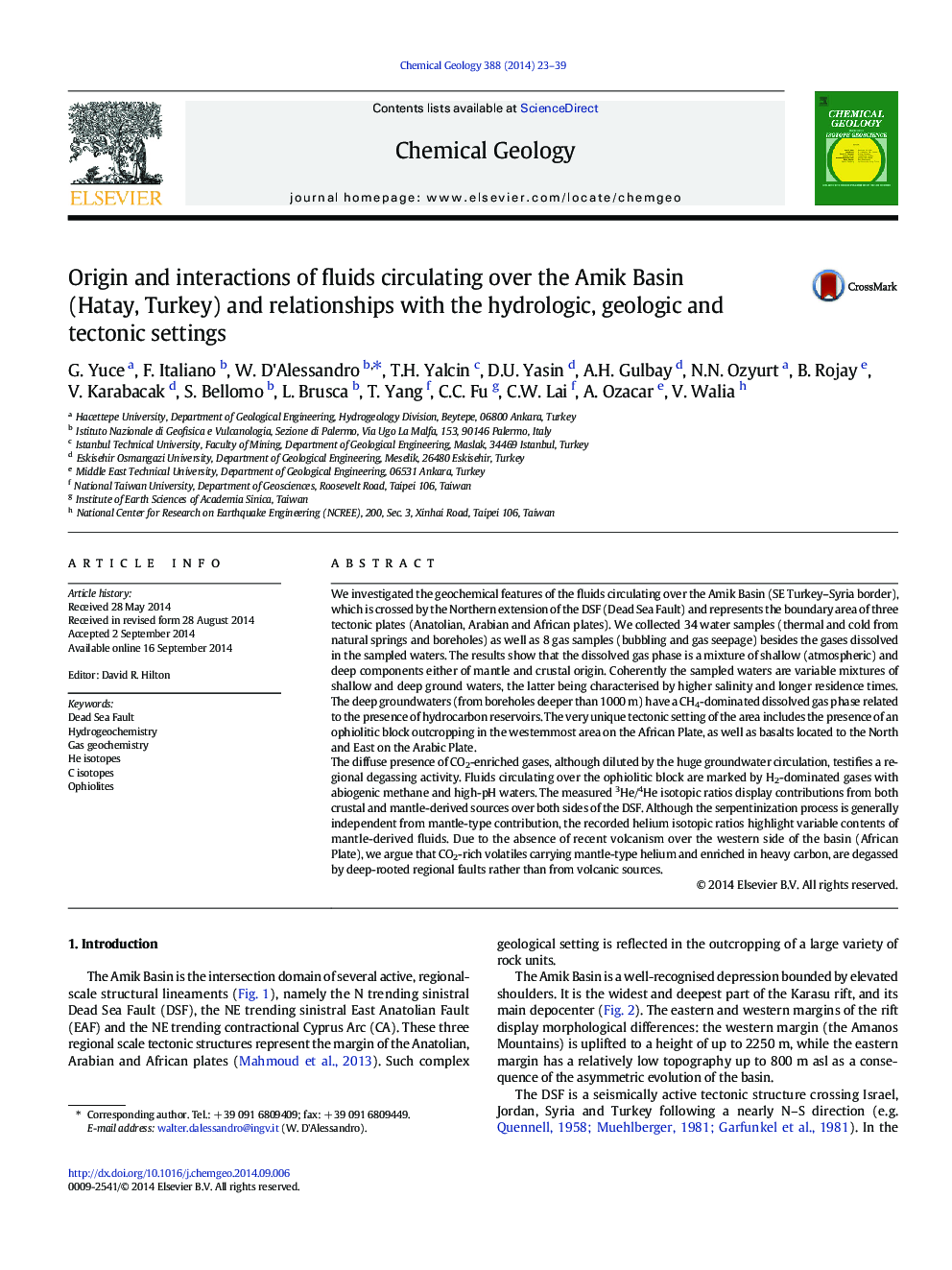| کد مقاله | کد نشریه | سال انتشار | مقاله انگلیسی | نسخه تمام متن |
|---|---|---|---|---|
| 4698693 | 1637584 | 2014 | 17 صفحه PDF | دانلود رایگان |
• The complex geodynamic structure of the area is reflected in the wide range of compositions of the emitted fluids.
• High salinity waters with hydrocarbon gases and a purely crustal He component were collected from deep wells.
• Hyperalkaline waters with CH4- and H2-dominated gases are found in the ophiolite complex.
• Shallow meteoric groundwaters in the southern part of the basin show a prevailing atmospheric component for dissolved gases.
• A significant mantle component (He and C) is found in the dissolved gases of the northeastern sites.
We investigated the geochemical features of the fluids circulating over the Amik Basin (SE Turkey–Syria border), which is crossed by the Northern extension of the DSF (Dead Sea Fault) and represents the boundary area of three tectonic plates (Anatolian, Arabian and African plates). We collected 34 water samples (thermal and cold from natural springs and boreholes) as well as 8 gas samples (bubbling and gas seepage) besides the gases dissolved in the sampled waters. The results show that the dissolved gas phase is a mixture of shallow (atmospheric) and deep components either of mantle and crustal origin. Coherently the sampled waters are variable mixtures of shallow and deep ground waters, the latter being characterised by higher salinity and longer residence times. The deep groundwaters (from boreholes deeper than 1000 m) have a CH4-dominated dissolved gas phase related to the presence of hydrocarbon reservoirs. The very unique tectonic setting of the area includes the presence of an ophiolitic block outcropping in the westernmost area on the African Plate, as well as basalts located to the North and East on the Arabic Plate.The diffuse presence of CO2-enriched gases, although diluted by the huge groundwater circulation, testifies a regional degassing activity. Fluids circulating over the ophiolitic block are marked by H2-dominated gases with abiogenic methane and high-pH waters. The measured 3He/4He isotopic ratios display contributions from both crustal and mantle-derived sources over both sides of the DSF. Although the serpentinization process is generally independent from mantle-type contribution, the recorded helium isotopic ratios highlight variable contents of mantle-derived fluids. Due to the absence of recent volcanism over the western side of the basin (African Plate), we argue that CO2-rich volatiles carrying mantle-type helium and enriched in heavy carbon, are degassed by deep-rooted regional faults rather than from volcanic sources.
Journal: Chemical Geology - Volume 388, 21 November 2014, Pages 23–39
